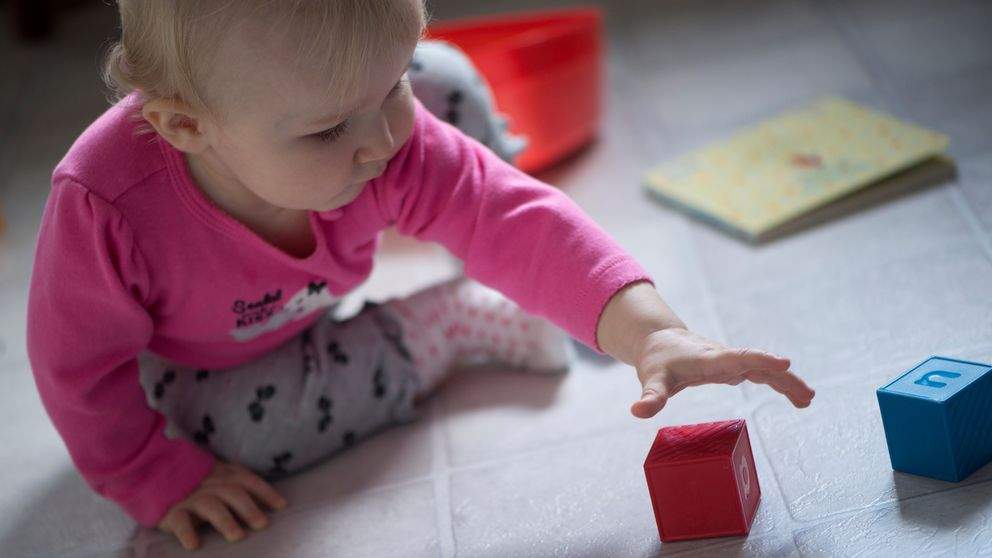If you look at how people move you can see a large variety. Some people are very “handy” and can do anything they want to do, light and easy. Others tend to move more stiffly and do not like moving, such as sports or dancing. Still others like sports very much but regularly suffer from physical discomfort because they don’t know how to keep it light and easy. This all goes back to how you learned to move yourself in the past.

Your movement program in your brain
In your infancy you teach yourself your movements. There is a program in your brain that stimulates you so that at some point you start to roll over, to crawl, to sit, to stand and eventually to walk. You could call that your inner drive to develop. An important driving force in this has been your curiosity. From there you straightened up, looked around, reached for something a little further away, which required you to get moving.
What makes everyone move differently?
Based on this underlying inner program, you would expect a much more equal development and therefore more equal skills. But stimulating stimuli, the interaction with the environment and the relationship with your parents or other carers are also important sources for our development. And so there are greater possibilities there, but also situations that hinder development.
- Did your parents give you enough playtime and space to play?
- Did they talk to you and sung songs especially for you?
- Did you feel seen when you were a baby or did you live in a family where there was little time and attention for you? Or in a time where that it was normally to do so?
- How much have you been touched and held in a positive, loving way? A touching what helped you to become aware of yourself and to feel your own boundary and at the same time that you could feel someone really deeply loved you.
- Did you feel safe enough to go out into the world with your parents as a safe haven nearby? Feeling safe is an important base for optimal development. Or did you miss that safety and were you dependent on yourself too soon? Or did you cling to you mother to claim your feeling of safety?
- Did you have to go faster than you could and actually wanted? For example, were you placed in a sitting position when you had not yet figured out how to come to a sitting position, so that your back and your balance were not yet ready? Were you put in a baby walker when you were actually not ready for bear weight on your feet and legs?
- Was there something about you that made you need extra and special stimulation that was not there or that was not noticed enough?
- Had you been seriously ill, causing your mother to be extra worried and protective and gave you insufficient room to make your own mistakes?
- Were you the only child or one of many?
You have learned your movements in this context of interaction with your environment and in your relationships. So in the context of how safe you felt and how carried and seen you felt. Feeling unsafe involves creating your own safety by making a muscle harness. This means that you work much harder than necessary with your muscles for movement. Or you made an emotion armor by switching off your feeling sensors in your body. Even then your moving is much harder work because you no longer perceive the fine movement regulation. Or you stop refining thinking your movement is at its best.
Your movements as you formed them are the foundation of everything you learned and developed later on. So you based all your further skills on that early movement foundation. Moshe Feldenkrais was the first movement researcher to see this. When he went in search of how movement is learned, it turned out that all physical education was based on the presence of, among other things, the ability to stand and walk. We teach ourselves those basic skills and with that “schooling” ourselves, part of our character is also formed.
Exploring and reshaping the developmental movements
That is our theme for the spring 2021 weekly classes: The Movement Development with Feldenkrais and Child’Space Lessons. We have 20 lessons that start with exploring gravity. If you first become a friend of gravity, you can then use it creatively in moving with gravity and then slowly find a form in which moving against gravity can be done in the same way: using where you let yourself go with gravity. It is a fun adventure and I have given these moves a lot of times and done it myself. It is a feast of recognition if your body parts cooperate. It can also cause frustration if you cannot find the softness in yourself immediately.
Sometimes processes also start to heal what needs to be healed with regard to your history as a child. This often includes emotions. I hope you are able to give space to those emotions and accepting attention. That’s basically all they need. Time and loving attention. Maybe also a listening ear. You can always email me if you want to tell me something about how things are going or if you need a little more.
The 20 zoom lessons of this semester cost: 360.00€. The English spoken one is on Thursday 8 PM Amsterdam Time. Do you want to join? E-mail me at feldenkraiscentrumutrecht@lombok.nl

No comments yet.